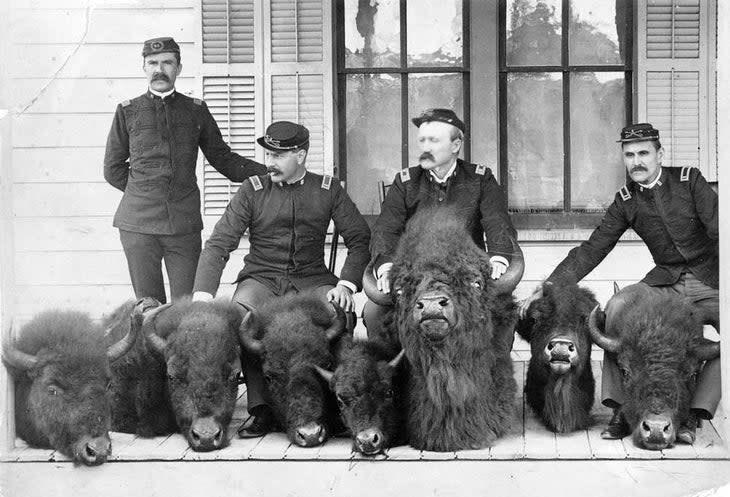The Photo that Saved the Bison in Yellowstone
This article originally appeared on My Yellowstone Park
Park spearheads national effort to save an endangered species.
During Yellowstone’s early days, people still hunted in the park. That changed radically in 1894 when Army soldiers in Yellowstone captured bison poacher Edgar Howell and posed with eight of the confiscated bison heads. Extensive media coverage of Howell's capture and the public outcry that followed led to the passage of the Lacey Act, which prohibited hunting, capturing or killing wild animals in the park. It also gave the Army authority to prosecute criminal activity.
At the time, bison were teetering on the brink of extinction after being slaughtered for hides, for sport and to weaken the Plains Indians who depended on bison for food, clothing and shelter.

With only 23 bison left in Yellowstone in 1916, park managers began some of the nation's first efforts to save an endangered species. Today 4,900 bison roam free in the park. Tension does exist between park managers and Montana landowners who fear roaming bison will transmit brucellosis to livestock. As part of a controversial agreement between Montana officials and federal agencies, park managers kill some bison annually to reduce their numbers.
For exclusive access to all of our fitness, gear, adventure, and travel stories, plus discounts on trips, events, and gear, sign up for Outside+ today.

